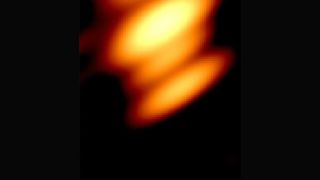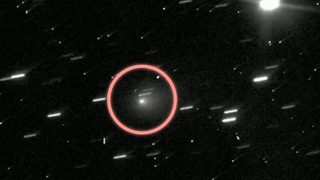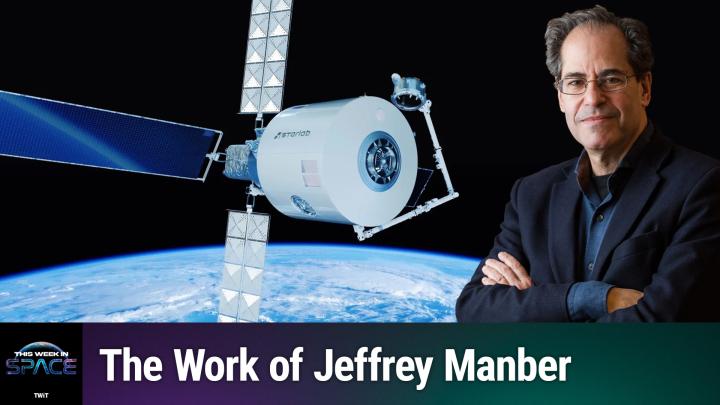Sharmila Kuthunur is an independent space journalist based in Bengaluru, India. Her work has also appeared in Scientific American, Science, Astronomy and Live Science, among other publications. She holds a master's degree in journalism from Northeastern University in Boston.
Latest articles by Sharmila Kuthunur
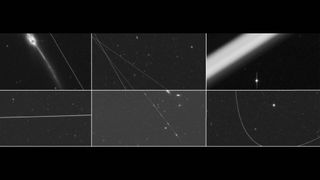
Satellite constellations could obscure most space telescope observations by late 2030s: 'That part of the image will be forever lost'
By Sharmila Kuthunur published
"The natural question that comes up is: how many more space telescopes will be affected when all these constellations are launched?"

James Webb Space Telescope finds strongest evidence yet for atmosphere around rocky exoplanet: 'It's really like a wet lava ball'
By Sharmila Kuthunur published
Astronomers have found the strongest evidence yet of an atmosphere around a rocky exoplanet.

Scientists map of old Mars river basins for the 1st time. These could be great places to search for ancient life
By Sharmila Kuthunur published
"We did the simplest thing that could be done — we just mapped them and pieced them together."

Interstellar comet 3I/ATLAS caught on camera in new images from Hubble Space Telescope and JUICE Jupiter probe
By Sharmila Kuthunur published
JUICE and the Hubble Space Telescope turned their gazes towards the interstellar visitor in November.
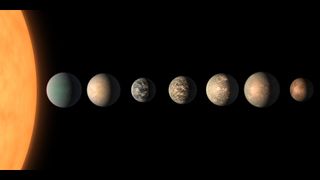
One of the most promising Earth-like worlds may not have an atmosphere after all
By Sharmila Kuthunur published
New simulations suggest TRAPPIST-1e's possible methane atmosphere may be a false signal from its star, raising fresh questions about the planet’s habitability.
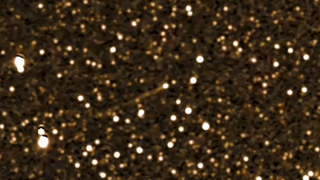
NASA spacecraft tracks comet SWAN in incredible 40-day timelapse — and even glimpses interstellar invader 3I/ATLAS (video)
By Sharmila Kuthunur published
NASA imaged Comet C/2025 R2 (SWAN) every four minutes for nearly 40 days, marking the longest any comet has been tracked with such frequency.

Why is the universe made of matter? These 'ghost particle' experiments could help us find out
By Sharmila Kuthunur published
A new joint analysis from the NOvA and T2K experiments offers the most precise look yet at neutrino behavior, bringing scientists closer to understanding why the universe is made of matter.
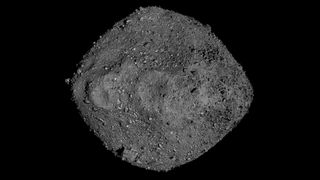
NASA discovers 'space gum' and sugars 'crucial to life' in asteroid Bennu samples brought to Earth (video)
By Sharmila Kuthunur published
Asteroid Bennu samples contain life-friendly sugars, a strange "space-gum," and ancient stardust
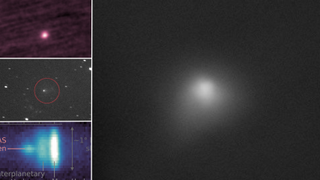
4 key things NASA just revealed about the interstellar comet 3I/ATLAS
By Sharmila Kuthunur published
"This is a snapshot of where we are very early in the scientific process."
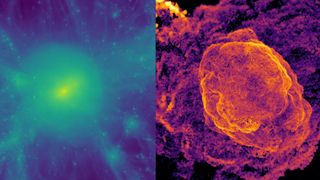
Astronomers finally explain the strange physics of ghostly 'radio relics' in space
By Sharmila Kuthunur published
A new set of computer simulations may finally explain several long-standing mysteries surrounding gigantic radio "relics" that appear when galaxy clusters collide.
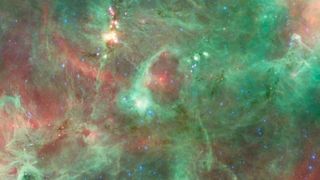
How did this 20-light-year-wide 'Diamond Ring' form in space? Maybe a cosmic bubble burst
By Sharmila Kuthunur published
"All that remained was the particular flat shape."

Scientists find a surprising twist in Earth's magnetic field
By Sharmila Kuthunur published
Parts of Earth's magnetic field work in reverse compared to what long-standing models predict, new research suggests.
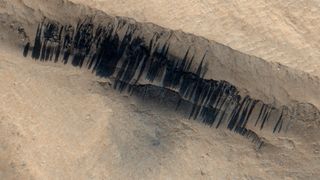
Mars orbiter spies 'barcode' aftermath of rare Red Planet avalanche caused by meteoroid impact
By Sharmila Kuthunur published
A European Mars orbiter spotted barcode-like dust streaks on the slopes of Apollinaris Mons, revealing how tiny avalanches help drive the Red Planet's massive dust cycle.
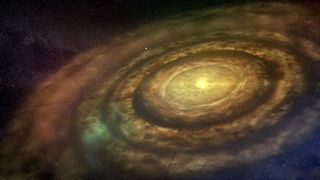
Planets may make their own water as they form — could that mean more habitable worlds in the universe?
By Sharmila Kuthunur published
New lab experiments suggest that water may not be a rare visitor delivered by chance but rather a fundamental ingredient woven into the process of planetary birth.
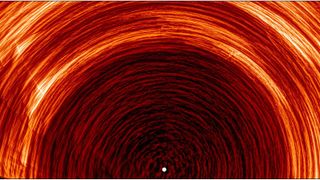
ESA's sun spacecraft captures 1st close-up of our star's magnetic engine in motion
By Sharmila Kuthunur published
"Solar Orbiter can now provide this missing piece of the puzzle."
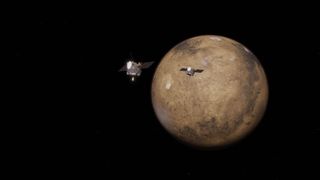
NASA's new Mars mission: These twin satellites could reveal how the Red Planet lost its atmosphere
By Sharmila Kuthunur published
NASA's first dual-satellite mission to another planet, ESCAPADE, will study Mars' magnetic field and atmosphere in 3D to uncover how it lost its water and air.
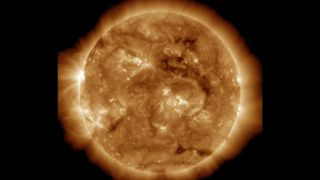
Scientists find twisting magnetic waves on the sun. Could this help solve a huge solar mystery?
By Sharmila Kuthunur published
"This discovery ends a protracted search for these waves that has its origins in the 1940s."
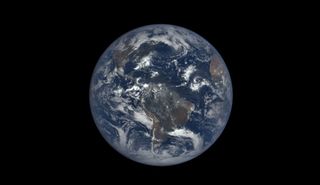
Is Earth 'on the brink'? 2024 was likely our planet’s hottest year in 125,000 years
By Sharmila Kuthunur published
Two new climate reports warn Earth's vital signs are flashing red after the hottest year in 125,000 years, but say recovery is still possible with swift action.
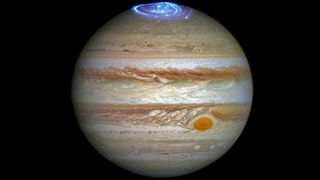
Without Jupiter, Earth may have spiraled into the sun long ago
By Sharmila Kuthunur published
New research shows how Jupiter carved out rings and gaps that changed how and when planets and meteorites formed.
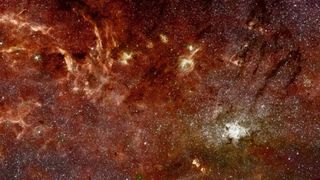
A faint glow in the Milky Way could be a dark matter footprint
By Sharmila Kuthunur published
The century-old mystery of dark matter — the invisible glue thought to hold galaxies together — just got a modern clue.
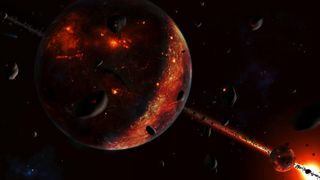
Scientists discover 1st evidence of 4.5-billion-year-old 'proto-Earth' buried deep within our planet
By Sharmila Kuthunur published
Ancient rocks from Greenland, Canada and Hawaii preserve a rare chemical fingerprint that may come from the Earth before the moon-forming impact, a new study reports.

Not-so-dark matter? Mysterious substance might leave red and blue 'fingerprints' on light
By Sharmila Kuthunur published
A new study suggests dark matter could subtly tint or polarize light, leaving faint color clues that next-generation telescopes might detect.
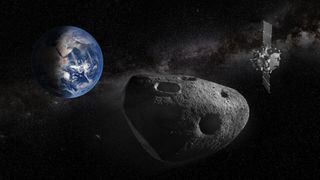
How do asteroids spin in space? The answer could help us prevent a catastrophic Earth impact
By Sharmila Kuthunur published
From how space rocks wobble to where to hit them, scientists are learning the fine art of asteroid deflection — and it could one day save Earth.
Breaking space news, the latest updates on rocket launches, skywatching events and more!

